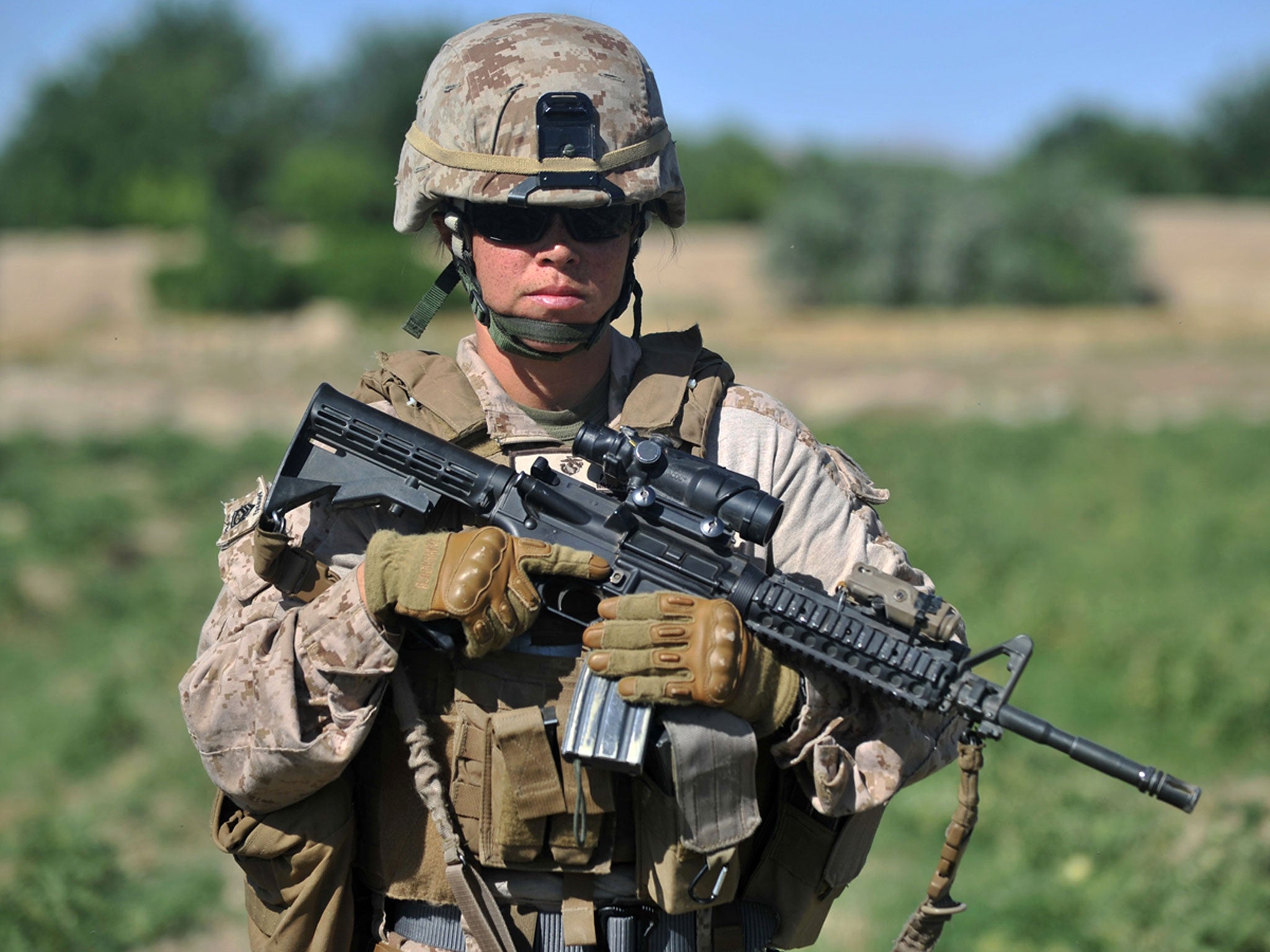War kills women – in uniform, in civvies
The assumptions that once kept women out of the military have been totally undermined by modern warfare

Your support helps us to tell the story
From reproductive rights to climate change to Big Tech, The Independent is on the ground when the story is developing. Whether it's investigating the financials of Elon Musk's pro-Trump PAC or producing our latest documentary, 'The A Word', which shines a light on the American women fighting for reproductive rights, we know how important it is to parse out the facts from the messaging.
At such a critical moment in US history, we need reporters on the ground. Your donation allows us to keep sending journalists to speak to both sides of the story.
The Independent is trusted by Americans across the entire political spectrum. And unlike many other quality news outlets, we choose not to lock Americans out of our reporting and analysis with paywalls. We believe quality journalism should be available to everyone, paid for by those who can afford it.
Your support makes all the difference.Thanks to modern communications, we now know the name of every British soldier who dies in Afghanistan. Most are male, but that may change if the Government follows the example of the US Defence Secretary, Leon Panetta, who has lifted the ban on females in combat roles. President Obama then welcomed the prospect of "our mothers, wives, sisters and daughters" playing a bigger role in protecting the country.
Obama's heart is in the right place, but his choice of language is telling. He could have talked about female engineers, pilots and doctors, but he didn't; even the President has yet to shake off the habit of seeing men through the lens of their careers, but women as members of the nation's family.
For an older generation of career soldiers, the change is a step too far, as an email exchange reported in The Washington Post revealed last week. An Iraq war veteran, Valerie Warner, wrote to Volney Warner, her grandfather, who is a retired general, explaining how she'd like to see women incorporated into infantry units. In the 1970s, he may have helped integrate women into hundreds of non-combat roles in the US army, but he didn't respond positively to her email. "I remain convinced that women are better at giving life than taking it," he told her.
General Warner's feelings may have been coloured by the death of another granddaughter in a roadside bomb in Afghanistan in 2005, but it used to be standard military thinking. As the proportion of women in the US military began to rise towards its current rate of 14 per cent, the pressure to allow them into combat roles has increased, and some commanders hope the change will reduce the US military's alarming levels of sexual harassment and assault. According to General Martin Dempsey, chairman of the Joint Chiefs of Staff, having "one part of the population that is designated as warriors and another that's designated as something else" encourages the psychology that leads to abuse. I think it's safe to say we're going to witness a re-evaluation of what constitutes a "warrior" when more women start returning from war with battlefield injuries, including loss of limbs.
In any case, the assumptions that originally kept women out of the military have been totally undermined by modern warfare. For centuries, combatants were encouraged to think they were risking their lives to protect women and children at home. Of course, that only ever applied to the winning side, as the horrific rape of German women in the wake of the Second World War showed. Now it's more dangerous to be a civilian than a soldier in a war zone: 90 per cent of casualties are civilians, according to Amnesty International; three-quarters are women and children.
Keeping women out of combat roles may protect traditional sensibilities, in other words. But the sight of flag-draped military coffins is a distraction from the reality of modern warfare, where women and children bear the brunt of injury, suffering and death.
www.politicalblonde.com
twitter.com/@polblonde
Join our commenting forum
Join thought-provoking conversations, follow other Independent readers and see their replies
Comments